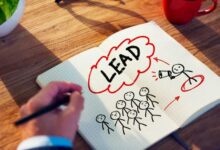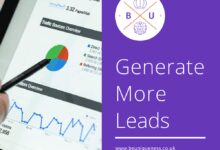Lead Generation: 7 Proven Strategies to Skyrocket Your Growth
Want more customers but don’t know where to start? Lead generation is the engine behind every successful business, turning strangers into loyal buyers. Let’s dive into the smart, proven ways to generate high-quality leads—fast.
What Is Lead Generation and Why It Matters

At its core, lead generation is the process of attracting and converting prospects into someone who has shown interest in your product or service. It’s not just about collecting emails—it’s about building relationships that drive sales. In today’s digital-first world, effective lead generation fuels growth, increases brand awareness, and boosts revenue.
The Evolution of Lead Generation
Lead generation has evolved dramatically over the past two decades. In the early 2000s, cold calling and trade shows were the primary methods. Fast forward to today, and digital channels like social media, search engines, and content marketing dominate the landscape.
- Pre-internet era: Direct mail, phone calls, and in-person networking.
- Early digital age: Email campaigns and basic landing pages.
- Modern era: AI-driven targeting, personalized content, and omnichannel nurturing.
This shift has made lead generation more scalable, measurable, and cost-effective than ever before.
Types of Leads: Marketing Qualified vs. Sales Qualified
Not all leads are created equal. Understanding the difference between Marketing Qualified Leads (MQLs) and Sales Qualified Leads (SQLs) is crucial for optimizing your funnel.
- Marketing Qualified Lead (MQL): A prospect who has engaged with your marketing efforts—such as downloading a guide or signing up for a webinar—but isn’t yet ready to buy.
- Sales Qualified Lead (SQL): A lead that marketing has passed to sales because they’ve shown buying intent—like requesting a demo or pricing information.
“An MQL is interested. An SQL is ready. Your job is to turn the first into the second.” — HubSpot
By clearly defining these stages, teams can align better and improve conversion rates.
Top 7 Lead Generation Strategies That Actually Work
With so many tactics out there, it’s easy to get overwhelmed. But not all lead generation strategies deliver results. Below are seven proven, data-backed methods that consistently generate high-quality leads across industries.
1. Content Marketing with Gated Offers
Content is still king when it comes to lead generation. By creating valuable resources—like ebooks, whitepapers, or toolkits—you can attract visitors and convert them into leads by gating the content behind a form.
- Create in-depth guides that solve real problems (e.g., “The Ultimate SEO Checklist”).
- Use compelling headlines and clear value propositions on landing pages.
- Integrate with CRM tools like HubSpot or Marketo to automate follow-ups.
For example, a SaaS company offering a free “Website Performance Audit” in exchange for an email can capture hundreds of leads monthly.
2. Search Engine Optimization (SEO) + Lead Magnets
SEO isn’t just about ranking—it’s a powerful lead generation tool when combined with lead magnets. When your content ranks high on Google, it attracts organic traffic that’s already searching for solutions you offer.
- Target long-tail keywords like “best CRM for small businesses” to attract qualified visitors.
- Embed lead capture forms within blog posts or use slide-in popups after a user reads 50% of the content.
- Optimize meta descriptions and title tags to increase click-through rates from search results.
A well-optimized blog post can continue generating leads for years with minimal maintenance.
3. Paid Advertising with High-Converting Landing Pages
Paid ads on platforms like Google Ads, LinkedIn, or Facebook can deliver instant visibility and fast lead generation. But success depends on two things: targeting and conversion design.
- Use precise audience targeting (e.g., job titles on LinkedIn or interest-based segments on Facebook).
- Send traffic to dedicated landing pages with minimal distractions and a single call-to-action (CTA).
- A/B test headlines, form lengths, and CTA buttons to maximize conversions.
According to WordStream, the average conversion rate for landing pages is 2.35%, but top performers achieve over 5.31% through optimization.
4. Webinars and Live Events
Webinars are one of the most effective lead generation tools because they combine education with engagement. Attendees must register with their contact info, giving you direct access to warm leads.
- Choose topics that address pain points (e.g., “How to Reduce Customer Churn in 30 Days”).
- Promote via email lists, social media, and partner channels.
- Follow up with a personalized email sequence offering a demo or consultation.
Companies like Zoom and Salesforce regularly use webinars to generate thousands of SQLs per quarter.
5. Social Media Lead Generation Campaigns
Social platforms aren’t just for brand awareness—they’re powerful lead generation engines when used strategically. LinkedIn Lead Gen Forms, Facebook Lead Ads, and Instagram contact buttons make it easy for users to submit info without leaving the app.
- Run targeted ad campaigns with lead forms pre-filled using user data (e.g., name, email).
- Use engaging video content to explain your offer in under 60 seconds.
- Retarget website visitors with special offers to increase conversion likelihood.
LinkedIn reports that its lead gen forms have up to 2x higher conversion rates than standard landing pages.
6. Referral and Partner Programs
People trust recommendations from peers more than ads. A well-structured referral program turns your existing customers into advocates, generating high-intent leads at a low cost.
- Offer incentives like discounts, gift cards, or account credits for successful referrals.
- Provide easy-to-share links and pre-written messages to reduce friction.
- Partner with complementary businesses to co-host events or cross-promote offers.
Dropbox famously grew its user base by 60% in 15 months using a referral program that rewarded both referrer and referee with extra storage.
7. Chatbots and Conversational Marketing
Modern lead generation isn’t just about forms—it’s about conversations. AI-powered chatbots on websites can engage visitors in real time, qualify leads, and book meetings without human intervention.
- Use chatbots to answer FAQs, offer content, or schedule demos.
- Integrate with CRM systems to log interactions and trigger follow-up emails.
- Personalize chatbot scripts based on visitor behavior (e.g., pages viewed, time on site).
According to Drift, companies using conversational marketing see up to 3x more qualified meetings booked per month.
Essential Tools for Effective Lead Generation
You don’t need to do everything manually. The right tools can automate, track, and optimize your lead generation efforts at scale.
CRM Platforms: The Backbone of Lead Management
A Customer Relationship Management (CRM) system is essential for organizing, tracking, and nurturing leads. It acts as a central hub for all customer interactions.
- HubSpot CRM: Free, user-friendly, and packed with automation features. Ideal for startups and SMBs. Learn more.
- Salesforce: Enterprise-grade with deep customization. Best for large teams with complex sales cycles. Explore Salesforce.
- Zoho CRM: Affordable and feature-rich, great for growing businesses. Visit Zoho.
These platforms help you score leads, assign tasks, and monitor pipeline health in real time.
Email Marketing Automation Tools
Email remains one of the highest ROI channels for lead generation. Automation tools help you send the right message at the right time.
- Mailchimp: Great for beginners, with drag-and-drop builders and basic automation. Check Mailchimp.
- Klaviyo: Ideal for e-commerce brands, with advanced segmentation and behavioral triggers.
- ActiveCampaign: Combines email marketing with CRM and automation workflows. Perfect for lead nurturing. See ActiveCampaign.
Automated welcome sequences, abandoned cart emails, and re-engagement campaigns can recover lost leads and boost conversions.
Landing Page and Form Builders
Your landing page is often the first impression a prospect has of your brand. It needs to be fast, clear, and conversion-optimized.
- Unbounce: Drag-and-drop builder with A/B testing and AI-powered copy suggestions. Try Unbounce.
- Leadpages: Simple interface with pre-designed templates for lead generation. Visit Leadpages.
- Typeform: Beautiful, interactive forms that feel less like data collection and more like conversations. Explore Typeform.
These tools integrate seamlessly with CRMs and email platforms, ensuring no lead falls through the cracks.
How to Qualify and Nurture Leads Effectively
Generating leads is only half the battle. The real challenge lies in turning those leads into customers. That’s where lead qualification and nurturing come in.
Lead Scoring: Prioritize the Right Prospects
Not every lead deserves the same attention. Lead scoring assigns points based on behavior (e.g., visiting pricing page) and demographics (e.g., job title, company size).
- High score = ready for sales outreach.
- Low score = needs more nurturing via email or content.
- Use automation to trigger actions when a lead hits a certain score.
This ensures your sales team focuses on the hottest leads, improving efficiency and close rates.
Email Drip Campaigns for Lead Nurturing
Nurturing leads means staying top-of-mind until they’re ready to buy. Email drip campaigns deliver a series of automated messages based on user behavior.
- Day 1: Welcome email with your lead magnet.
- Day 3: Share a customer success story.
- Day 7: Offer a free consultation or demo.
According to Constant Contact, drip emails generate 18x more revenue than broadcast emails.
Personalization and Behavioral Triggers
Generic messages get ignored. Personalization increases open rates, click-throughs, and conversions.
- Use the lead’s name, company, or location in emails.
- Trigger messages based on actions (e.g., downloaded a pricing guide → send case study).
- Leverage dynamic content on landing pages that changes based on visitor profile.
Personalized subject lines are 26% more likely to be opened, according to Campaign Monitor.
Measuring Lead Generation Success: Key Metrics to Track
If you’re not measuring, you’re not improving. Tracking the right KPIs helps you understand what’s working and where to optimize.
Conversion Rate: From Visitor to Lead
This measures how many website visitors become leads (e.g., fill out a form). A high traffic volume with low conversions signals a problem with your offer or design.
- Average conversion rate: 2–5% (varies by industry).
- Optimize by testing CTAs, form length, and page load speed.
Use tools like Google Analytics and Hotjar to analyze user behavior and identify drop-off points.
Cost Per Lead (CPL)
CPL tells you how much you’re spending to acquire each lead. It’s crucial for evaluating the efficiency of paid campaigns.
- Formula: Total campaign spend ÷ Number of leads generated.
- Compare CPL across channels to allocate budget wisely.
For example, LinkedIn ads may have a higher CPL than Facebook, but the leads might be more qualified.
Lead-to-Customer Conversion Rate
This shows how many leads actually become paying customers. A low rate could mean poor lead quality or weak sales follow-up.
- Benchmark: 5–20% depending on industry.
- Improve by aligning marketing and sales teams on lead criteria.
Regularly review lost leads to identify common objections or gaps in your process.
Return on Investment (ROI)
Ultimately, lead generation should drive revenue. ROI measures the profit generated relative to the cost of your efforts.
- Formula: (Revenue from leads – Cost of campaign) ÷ Cost of campaign.
- A positive ROI means your strategy is working; a negative one signals the need for change.
For instance, if a $1,000 campaign brings in $5,000 in sales, your ROI is 400%.
Common Lead Generation Mistakes to Avoid
Even experienced marketers make mistakes that hurt their lead generation results. Here are the most common pitfalls and how to avoid them.
Targeting the Wrong Audience
Generating leads is pointless if they’re not your ideal customers. Creating detailed buyer personas helps you focus on the right people.
- Conduct surveys and interviews with existing customers.
- Use analytics to identify high-value traffic sources.
- Avoid broad targeting—precision beats volume.
Spending time on audience research upfront saves money and boosts conversion rates later.
Overcomplicating the Lead Capture Form
Every extra field on a form reduces conversions. Only ask for essential information upfront.
- Start with just name and email for low-commitment offers.
- Use progressive profiling to gather more data over time.
- Test single-field vs. multi-field forms to find the sweet spot.
According to HubSpot, reducing form fields from 4 to 3 increased conversions by 50% in one case study.
Ignoring Lead Follow-Up
Most leads won’t convert on the first touch. Without timely follow-up, you risk losing them to competitors.
- Respond within 5 minutes for the highest chance of engagement.
- Use automation to send immediate thank-you emails and nurture sequences.
- Set up alerts for high-intent behaviors (e.g., visiting the pricing page twice).
Companies that follow up within an hour are 7x more likely to qualify a lead, per InsideSales.com.
Future Trends in Lead Generation
The world of lead generation is constantly evolving. Staying ahead of trends ensures your strategies remain effective and competitive.
AI and Predictive Lead Scoring
Artificial intelligence is transforming how we identify and prioritize leads. Predictive lead scoring uses machine learning to analyze historical data and predict which leads are most likely to convert.
- Tools like Salesforce Einstein and HubSpot Einstein automate scoring with high accuracy.
- Reduces guesswork and improves sales efficiency.
- Enables hyper-personalized messaging at scale.
AI-driven insights help marketers focus on high-potential leads and optimize campaigns in real time.
Voice Search and Visual Search Optimization
With the rise of smart speakers and image-based platforms like Pinterest and Google Lens, optimizing for voice and visual search is becoming critical for lead generation.
- Optimize content for natural language queries (e.g., “Where can I buy eco-friendly office supplies?”).
- Use descriptive alt text and structured data for images.
- Ensure mobile-friendliness and fast loading times.
By 2025, over 50% of searches will be voice or image-based, according to Comscore.
Privacy-First Lead Generation
With increasing regulations (GDPR, CCPA) and the deprecation of third-party cookies, marketers must adapt to a privacy-first world.
- Focus on first-party data collection through value exchanges (e.g., content for email).
- Be transparent about data usage and obtain explicit consent.
- Build trust through clear privacy policies and secure forms.
Trust is now a competitive advantage. Brands that respect privacy will win long-term loyalty and higher-quality leads.
What is lead generation?
Lead generation is the process of attracting and converting individuals who are interested in your product or service into potential customers (leads) for your business. It involves capturing contact information and nurturing those prospects toward a purchase.
What are the best lead generation strategies?
The most effective lead generation strategies include content marketing with gated offers, SEO-optimized blogs, paid advertising with high-converting landing pages, webinars, social media lead ads, referral programs, and conversational marketing using chatbots.
How do you generate high-quality leads?
To generate high-quality leads, focus on targeting the right audience, offering valuable content, using lead scoring to prioritize prospects, and nurturing leads with personalized email sequences. Quality matters more than quantity.
What tools are best for lead generation?
Top tools include HubSpot, Salesforce, and Zoho for CRM; Mailchimp, ActiveCampaign, and Klaviyo for email marketing; and Unbounce, Leadpages, and Typeform for landing pages and forms.
How do you measure lead generation success?
Key metrics include conversion rate, cost per lead (CPL), lead-to-customer conversion rate, and return on investment (ROI). Tracking these helps optimize campaigns and improve overall performance.
Lead generation is the lifeblood of sustainable business growth. From understanding the basics to implementing advanced strategies, the key is consistency, testing, and alignment between marketing and sales. Whether you’re using content, ads, webinars, or AI, the goal remains the same: attract the right people, build trust, and guide them toward a purchase. By avoiding common mistakes, leveraging the right tools, and staying ahead of trends, you can create a lead generation engine that drives predictable, scalable growth. Start small, measure everything, and keep optimizing—your next big customer is just one lead away.
Further Reading:



